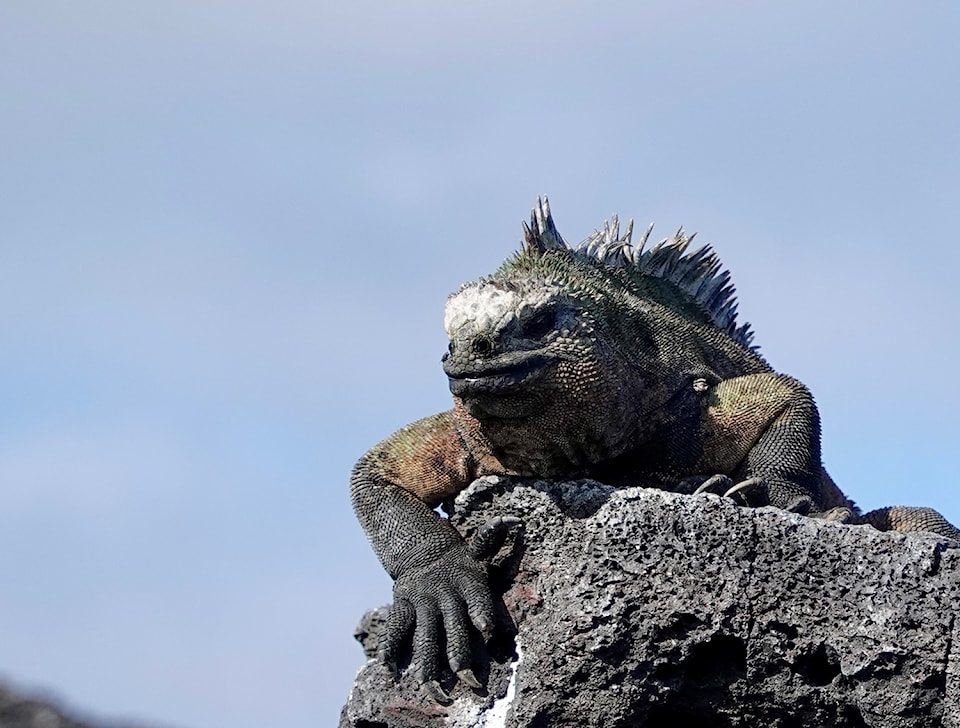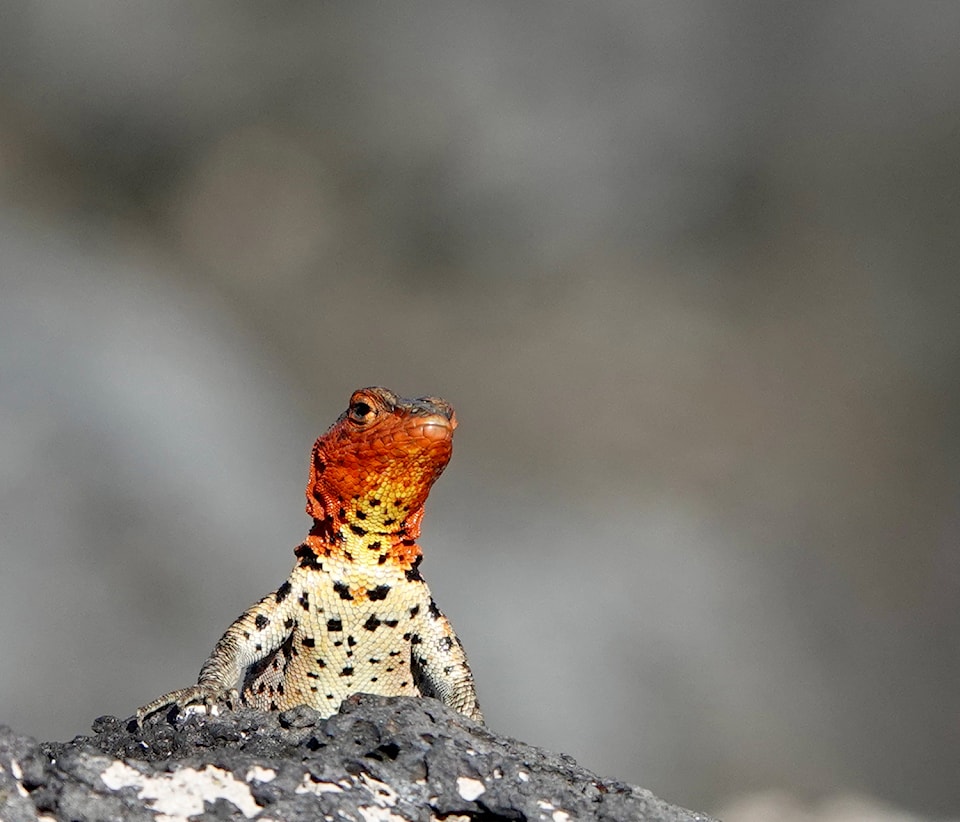“The trip of a lifetime.” It’s a popular expression, but to me, it makes no sense. If a trip is that fantastic, then why not do it again?
Which is why my husband and I find ourselves in Galápagos 32 years after we first visited these enchanted islands that straddle the equator off the coast of Ecuador.
In 1991, Kit and I were budget travellers, backpacking around the world for a year. We arrived in Galápagos knowing only that we wanted to explore by small ship. We showed up at the dock in Puerto Ayora on the island of Santa Cruz, met a few others also waiting for a boat and grabbed the first one that came in.
Decades later, we still talk about that week: recalling the experiences of coming face-to-face underwater with sea lions, having our toes gently nibbled by curious penguins and meeting the largest tortoises on the planet.
We wanted a similar experience this time, but more upscale. A friend told me about a company based in Ecuador and owned by a Canadian who backpacked through South America and stayed in Galápagos at the end of her trip. Judy Carvalhal worked initially as a park naturalist, and then started her own business, Enchanted Expeditions, and helped pioneer tourism on these unique islands.

Today, Enchanted Expeditions operates three ships year-round in Galapagos. We chose to travel on the Cachalote Explorer. Built in Vancouver originally as a fishing boat, it was converted to a passenger vessel and for a few summers cruised along our west coast. After Galápagos purchased it, she gave it further upgrades to make it a “First Class” yacht.
At 88 feet, and accommodating just 16 passengers in eight cabins, each with private bath and air conditioning, it sounded just right.
Before boarding on our first day, we visited Rancho El Manzanillo, a farm on Santa Cruz where some of the islands’ 20,000 giant tortoises roam freely. If that seems like a lot, consider that before people arrived in Galápagos in 1535, there were 250,000 tortoises.
Their demise was rapid once sailors learned that a tortoise could stay alive for up to a year without food or water and provide fresh meat for crews.
So it was thrilling to see dozens wandering freely and—we couldn’t help but notice—procreating like crazy!
“He’s probably having a cigarette by now,” joked Bob, a guest from New Mexico, as we looked for one particularly large and lustful tortoise that we spotted earlier but had disappeared by the end of our walk. No problem, we’ll see lots more in the days ahead.
Aboard the ship that evening, we learned how the week would unfold. We were sailing what’s known as the Fernandina itinerary, through the western half of the Galápagos, with four excursions daily, two on land and two in the water, either snorkeling or kayaking.
Between outings, we’d enjoy Ecuadorian-style meals (lots of local fish, meat and veggies, with spicy salsas on the side), snacks on deck (fresh fruit and empanadas), post-prandial naps on chaise lounges on the upper deck, and pre-dinner drinks in the lounge while oohing and aahing over each other’s photos from the day.
While we drifted off to sleep each night, our captain moved our ship to a different location, so we awoke to a new view each morning. Sometimes it was a vision one of misty summits and lush vegetation, but more often than not, it was black lava studded with cactus and the distinctive cone of one or more volcanos in the distance.
Galápagos is one of the most volcanically active places on the planet. Some of the landscape is so raw, you wonder how anything lives here. Yet this archipelago of 19 islands and surrounding water—the Galápagos Marine Reserve—is home to about 9,000 species. The reason there’s so much life is simple. The islands lie in the path of five nutrient-rich ocean currents, including two of the biggest.
“The Humboldt from the south and the Cromwell from the west upwells all this area and makes possible life,” explained Juan, our guide, the morning we observed Galápagos penguins, marine iguanas and blue-footed boobies all sharing a slab of lava on Isabela, the area’s largest island.

Formed by five active volcanoes fused together, Isabela offers plenty of life inland, too. The previous day we hiked into its moist highlands, melodious with birds, including Darwin’s famous finches, to the enormous fern-rimmed caldera of Sierra Negra volcano. Later, we visited the Arnaldo Tupiza Tortoise Breeding Center, and walked on a boardwalk through a saltwater lagoon dotted with ducks and flamingos.
We ended the day in Puerto Villamil, where we spotted a rather rare species on these islands—people! About 25,000 Ecuadorians live on four islands outside the national park boundaries, but not just any Ecuadorian. These days you must be born in Galápagos or married to a Galapagueño to live here.
As much as I enjoyed our land excursions, the daily highlight for me was underwater. Colourful fish, adorable penguins and most especially, green sea turtles. Everywhere we went, they were there, like small planes gliding through the shallow water, oblivious to us.
“I got three turtles within a single camera frame!” said Dave, a guest from California, who had dived all over the world. “That’s unheard of.”
When UNESCO awarded Galápagos World Heritage status in 1978, this was one of the reasons stated: “No other site in the world can offer the experience of diving with such a diversity of marine life forms that are so familiar with human beings, that they accompany divers.”
And not just accompany divers.
One day I was sitting on the side of the Zodiac after snorkeling when I felt a tug on the zipper on the back of my wetsuit. At first, I thought it was my husband, but I could see him busy talking with someone on his other side. I looked behind me and there was a Galápagos cormorant in the water with my zipper pull in its mouth!
Yes, returning to Galápagos was a marvellous idea, one I’m already tempted to do yet again.
For more information, see enchantedexpeditions.com.



